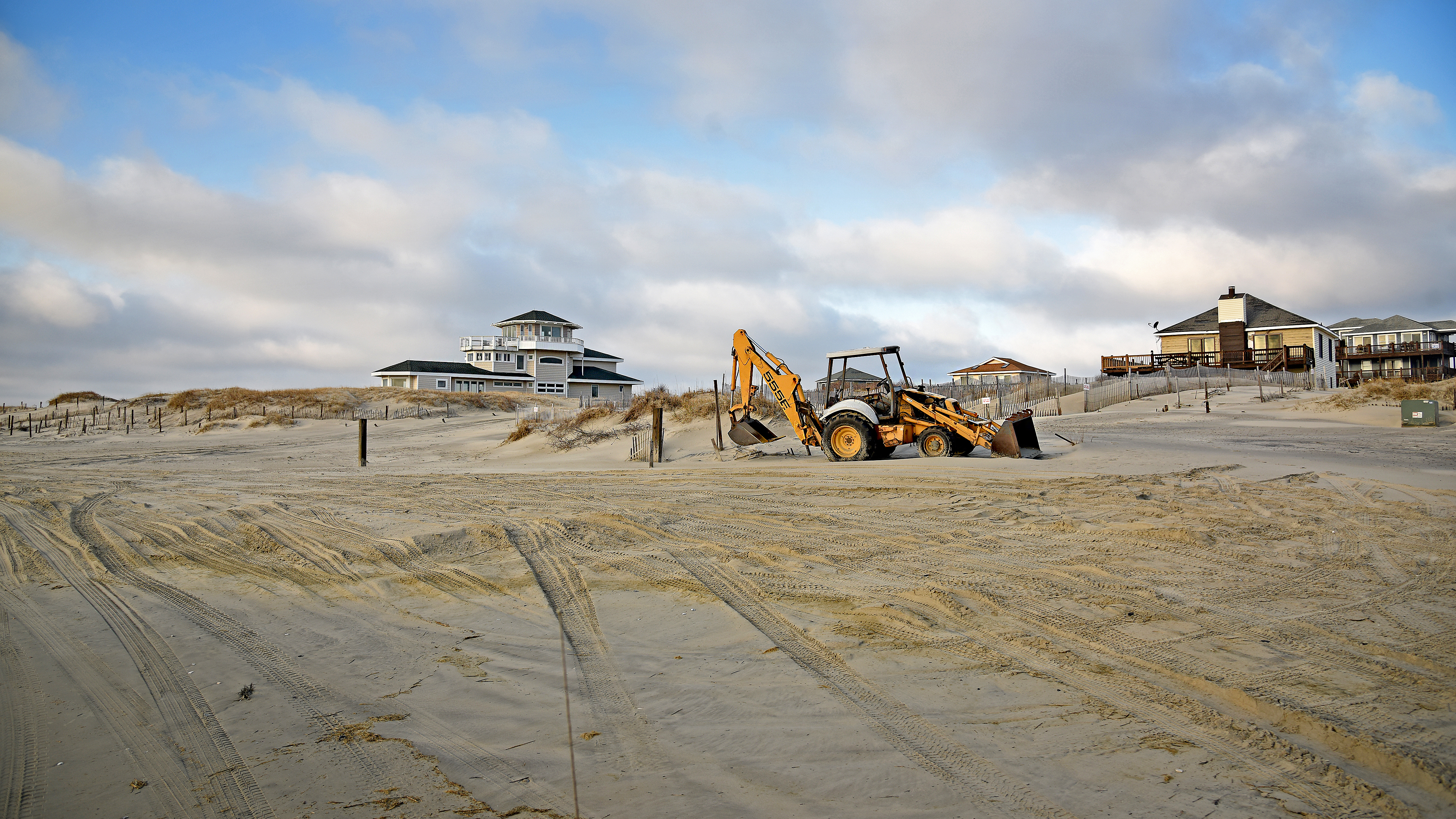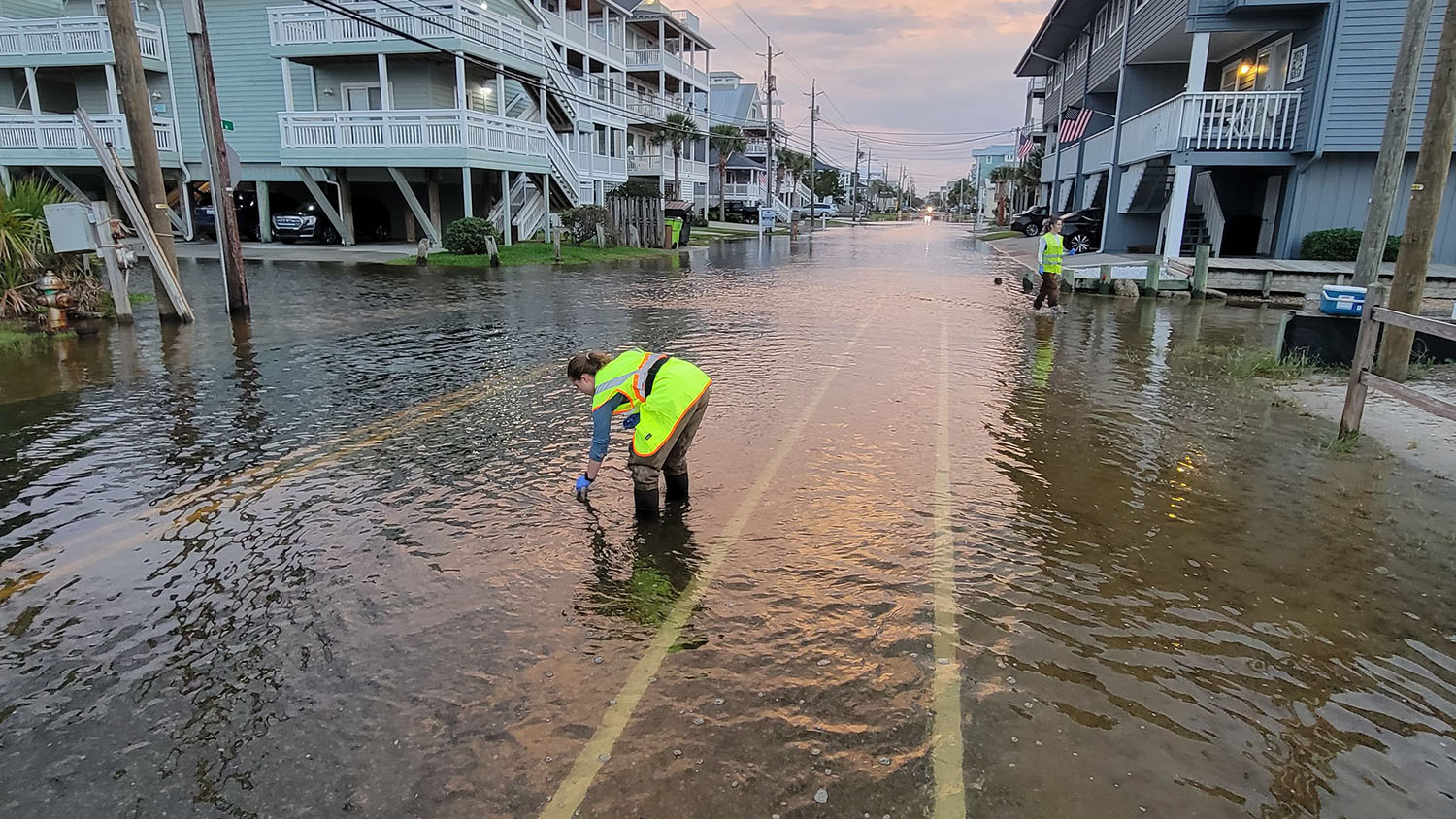When Coastal Hazards Threaten Your Outer Banks Trip

For Immediate Release
A trip to the Outer Banks is a tradition for some North Carolina families and a bucket-list destination for other tourists. A new study from North Carolina State University asked visitors for their reactions to having travel plans disrupted by coastal hazards like washed-out roads or limited beach access. Would they reschedule? Go somewhere else? Stop visiting the Outer Banks?
Their answers provide insight for tourism planning and investments in coastal communities, says lead author Erin Seekamp, an NC State associate professor and tourism extension specialist in the Department of Parks, Recreation and Tourism Management.
“The majority of those we surveyed said they wouldn’t change their trip-taking behavior, but about a third or so said that they were uncertain what they would do,” Seekamp says. “It’s that third that could really plague the future economy of Outer Banks tourism destinations.”
More than 340 Outer Banks visitors responded to scenarios involving four factors that could affect their trip plans: transportation disruptions, increased lodging taxes to pay for beach nourishment (adding sand to beaches), narrow beach width, and limited access because of beach nourishment projects at their destinations.
“We found that transportation disruption was most important in terms of future trip-taking behavior,” Seekamp says. “The idea of this study was to try to figure out, among many different factors that influence coastal tourists to the Outer Banks, which would be the most important that would inhibit them from returning.”
Possible transportation disruptions involved having to reach the Outer Banks by ferry because the Highway 64 bridge was closed; absence of the Hatteras-Ocracoke ferry until the inlet was dredged; or closure of Highway 12, a scenic byway along the Outer Banks, at Oregon Inlet.
“It was the ability to drive Highway 12 north-south that seems to be driving people’s decision-making and their expectation of what an Outer Banks vacation is like,” Seekamp says. “They want to visit many sites and being able to drive along that thin ribbon of sand between Nags Head and Hatteras is important to them.”
While transportation issues could impede access for travelers, other scenarios focused on costs, aesthetics and crowding, which are also related to travel behavior, Seekamp says.
Increased costs—in this case in the form of lodging taxes to support beach nourishment projects—was not as important as transportation disruptions, even when the hypothetical scenario was as high as a 7.5% increase.
“I think that is a good indication that there is potential for tourists themselves to start paying for the opportunities to go back and continue to connect with this place,” Seekamp says. “Finding new, creative strategies to fund investments in coastal communities is going to be really important. We also need to understand the decision-making processes businesses use to plan for and reinvest after coastal hazards, as well as look for more opportunities to coordinate projects as a region.”
A 25 to 75% likelihood of having to take a half-mile detour to reach the beach while sand was being added was a less important factor in respondents’ decision making, as was having a narrow beach spanning 50, 100 or 150 feet from dunes to water’s edge at high tide.
Surveys took place in summer 2016 at tourist destinations in Dare and Hyde counties. About a quarter of those responding (27%) were first-time visitors, while 28% had visited the region two to five times and 27% had visited six to 20 times. About 18% of those surveyed had visited the Outer Banks more than 20 times.
“The Outer Banks means a lot to many visitors in terms of their own personal identity as they find themselves connecting with the resources and experiences that the Outer Banks provide,” Seekamp says. “It not only gives them a sense of self-identity but also family identity if they’ve had a tradition of visiting together for a long time.”
Where participants lived and the connection they felt to the Outer Banks influenced their plans to postpone their trips, change destinations or stop visiting the region.
In-state residency was the only factor linked to substituting a trip to another North Carolina beach. North Carolina residents who had lower incomes and felt a greater connection to the Outer Banks were more likely to shift their trips to the Inner Banks if faced with disruptions.
Younger, out-of-state residents who had visited the Outer Banks less and had higher incomes were most likely to rebook their trips to a beach outside of North Carolina. People who reported less of a connection to the Outer Banks were the most likely to stop visiting entirely.
“One of the things I’d like to study in the future is what happens with people who were displaced from the Outer Banks,” Seekamp says. “What were their connections before they left and have they made new connections to other beaches? Have they started going to the mountains instead? It’s important to look at people’s long-term connections with place.”
The study, “Influences on coastal tourism demand and substitution behaviors from climate change impacts and hazard recovery responses,” appears in the Journal of Sustainable Tourism. Co-authors Matthew Jurjonas and Karly Bitsura-Meszaros are former NC State graduate students. NC State’s College of Natural Resources supported the study.
– ford –
Note: An abstract of the paper follows.
“Influences on coastal tourism demand and substitution behaviors from climate change impacts and hazard recovery responses”
Authors: Erin Seekamp, Matthew Jurjonas and Karly Bitsura-Meszaros, North Carolina State University
Published: Journal of Sustainable Tourism
DOI: https://doi.org/10.1080/09669582.2019.1599005
Abstract: Climate change impacts can negatively affect tourism demand and, subsequently, local economies by disrupting access and altering physical conditions, including those from adaptation and recovery efforts. Research is needed that helps destinations become more climate ready, including studies of decision factors that influence trip-taking behaviors. This paper presents findings from a discrete choice experiment to determine how physical and economic changes could affect visitation behaviors to a vulnerable coastal destination, the Outer Banks region of North Carolina, USA. We embedded our experiment within an on-site visitor survey to reveal thresholds of negative changes to coastal attributes that tourists are willing to tolerate, and also examined tourists’ willingness to substitute their future trips to the region. Transportation-related changes had the highest relative importance among the four selected attributes. The likelihood of three types of spatial substitution, spurred by not being able to access the destination, were consistently related to residency but less consistently related to place meanings, visitation history, and other demographic variables. Study results can inform climate change planning within coastal zones to minimize negative impacts to tourism demand, such as the need to develop creative revenue streams to maintain resilience in communities that rely on occupancy taxes.


